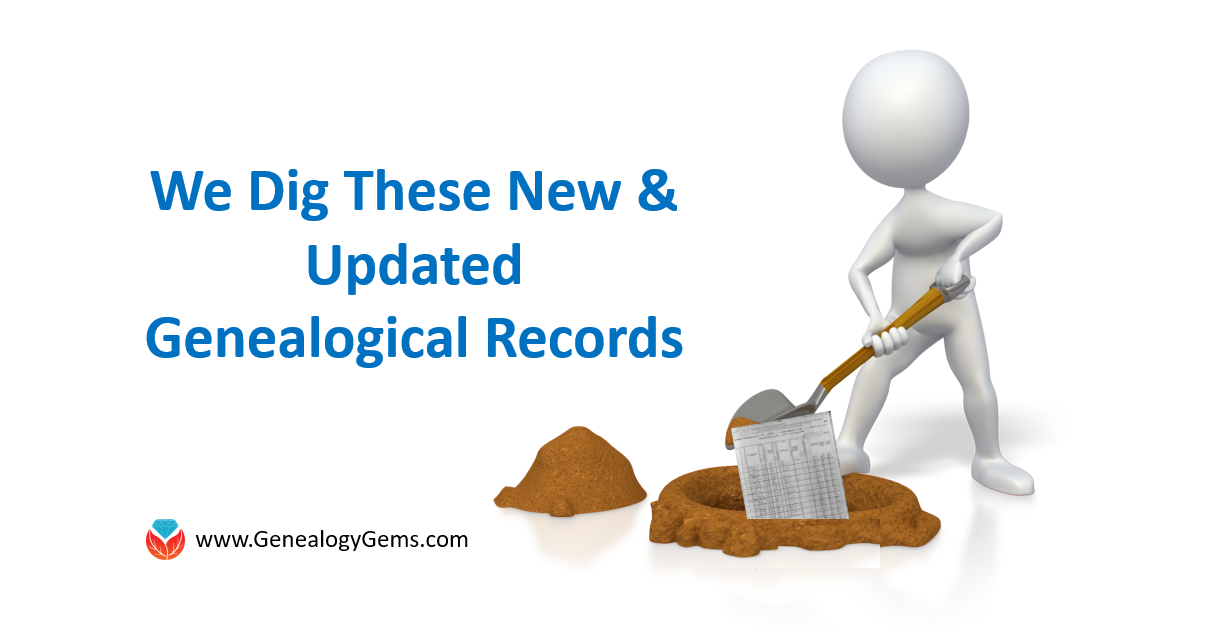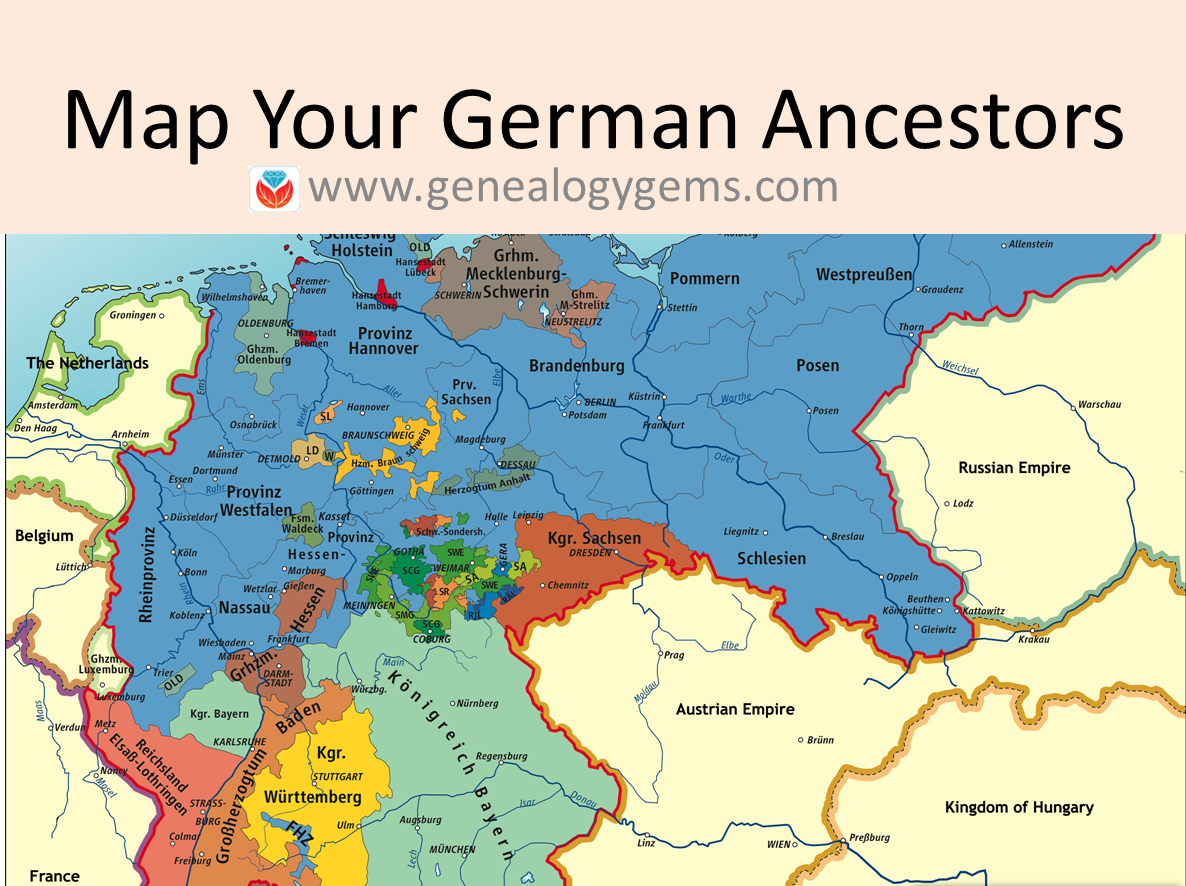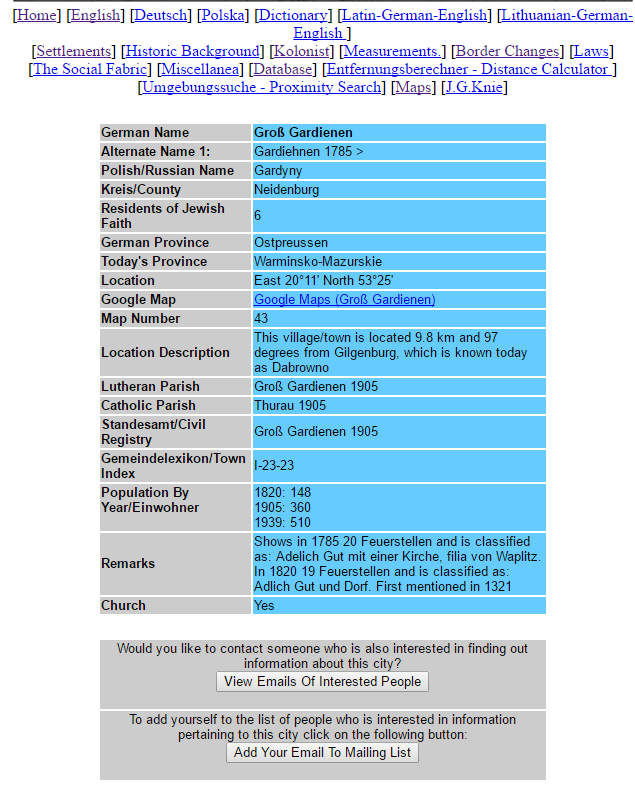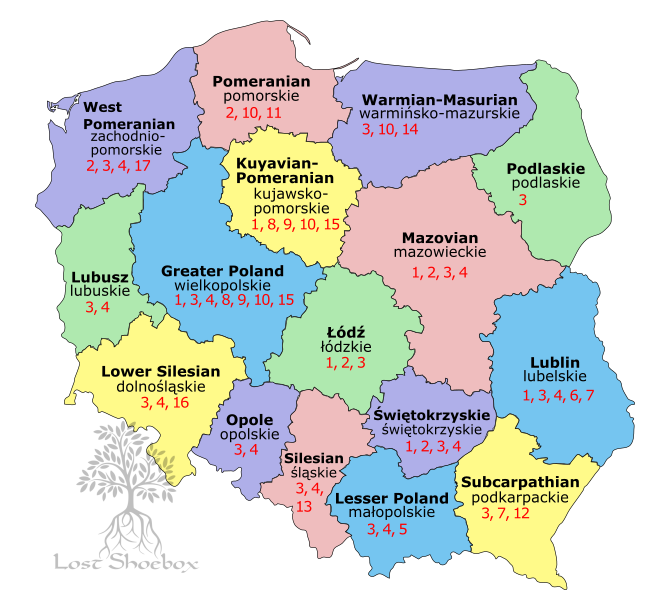by Lisa Cooke | Apr 1, 2016 | 01 What's New, Records & databases
Here’s our weekly roundup of new genealogy records online. This week: Australia, Belgium, Czech Republic, England, Germany, Japan, Mexico, Wales and U.S. passport  and homestead records.
and homestead records.
AUSTRALIA – QUEENSLAND. Ancestry.com has added several indexes for Queensland, Australia: Prison and Reformatory Indexes (1824-1936), Property Indexes (1842-1895), Index to Aliens (1913) and Occupational Indexes (1857-1922). These indexes all come from the Queensland State Archives. You can search them for free at Ancestry.com or from the QSA website.
BELGIUM CIVIL REGISTRATIONS. FamilySearch has updated its civil registration collections for several parts of Belgium (dating back to the 1500s for some areas): Antwerp, Brabant, East Flanders, Hainaut, Liège and West Flanders. According to FamilySearch, these collections include “civil registration(s) of births, marriages and deaths from the Belgium National Archives. The collection also includes marriage proclamations, marriage supplements, and some original indexes.”
CZECH REPUBLIC SCHOOL REGISTERS. Over a million browsable digital images from the Opava State Regional Archive have been added to a free collection of Czech Republic School Registers (1799-1953) at FamilySearch.org. “School registers contain the full name for a child, birth date, place of birth, country, religion and father’s full name, and place of residence.”
ENGLAND AND WALES SCHOOL RECORDS. Findmypast.com has just added about 687,000 new school admission records for 41 counties in England and Wales (1870-1914). Original records may include names, residence, birth data, school name and location, parents’ names, admission information, father’s occupation, any exemption from religious instruction, previous school attendance, illnesses/absence and even exam results.
ENGLAND – CORNWALL. Several new collections on Cornwall are searchable at Ancestry.com: Congregational and Baptist Church Registers (1763-1923), Workhouse Admission and Discharge Records (1839-1872), Militia and Sea Fencibles Index (1780 – 1831), Bodmin Gaol Records (1821-1899), Penzance Dispensary Admissions (1828-1841), Truro Police Charge Books (1846-1896) and Inmates at St. Lawrence’s Asylum, Bodmin (1840-1900).
GERMANY VITAL RECORDS. Ancestry.com has recently added a new collection of death records for Mannheim. It has also updated collections of birth records for Hamburg; birth, marriage and death records for Regen County (dating to 1876) and birth, marriage and death records for Oldenberg.
JAPAN GENEALOGIES AND VILLAGE RECORDS. FamilySearch.org has added nearly a quarter million browsable images to its collection of Japanese village records (dating back to 709 AD) and nearly 60,000 browsable records to its collection of Japanese genealogies (dating to 850 AD).
MEXICO CIVIL REGISTRATIONS. Ancestry.com has updated its collections of indexed images to Chihuahua, Mexico birth, marriage and death records from civil registrations. The collections are in Spanish, so use Spanish names and locations.
U.S. HOMESTEAD RECORDS. Ancestry.com’s collection of U.S. Homestead Records (1861-1936) has recently been updated. According to the collection description, “Homestead files consist of unbound documents that include final certificates, applications with land descriptions, affidavits showing proof of citizenship, register and receiver receipts, notices and final proofs, and testimonies of witnesses. These documents are part of the Records of the Bureau of Land Management (formerly known as the General Land Office), Record Group (RG) 49. The collection currently includes records from Arizona, Indiana, Nebraska, Nevada, Ohio, and part of Iowa. Additional records will be added in future updates.”
U.S. PASSPORTS. Nearly 40,000 indexed names have been added to FamilySearch.org’s free collection of United States Passport Applications (1795-1925). These are a fantastic resource for finding immigrant ancestors and those who traveled a lot. Click here to learn more about U.S. passport records.

Thanks for sharing this post with others who have ancestors from these parts of the world. You’re a gem!
by | Mar 4, 2014 | 01 What's New, History
 Recently theBlaze.com reported that a California couple found–literally–buried treasure on their property! It was a stash of coins (now rare and highly prized) that was carefully hoarded away by somebody in the 1800s. They found it partially exposed under an old tree while walking their dog!
Recently theBlaze.com reported that a California couple found–literally–buried treasure on their property! It was a stash of coins (now rare and highly prized) that was carefully hoarded away by somebody in the 1800s. They found it partially exposed under an old tree while walking their dog!
The find is valued at about $10 million because many of the coins are in such great condition and are now very rare.
“I don’t like to say once-in-a-lifetime for anything, but you don’t get an opportunity to handle this kind of material, a treasure like this, ever,” said veteran numismatist Don Kagin, who is representing the finders. “It’s like they found the pot of gold at the end of the rainbow.”
What would you like to find buried on your family property?!
See the find for yourself:
by Lisa Cooke | Apr 15, 2017 | 01 What's New, German, Legacy Tree Genealogists, Maps |
Finding German hometowns can be challenging. Guest blogger Camille Andrus, a professional genealogist specializing in German research and Project Manager at Legacy Tree Genealogists shares 3 free German genealogy websites to put your ancestors on the map in the former German empire and modern-day Poland.

Map of German Reich 1871–1918. from kgberger, Creative Commons license, Wikipedia.com;
Anyone tracing German ancestors quickly finds themselves puzzling over maps in a region that has experienced a lot of change. Camille Andrus of Legacy Tree Genealogists recommends these 3 free German genealogy websites to help you navigate the former German empire–from Pomerania to Prussia to Poland. Here are her picks and her explanations for using them.
1. www.MeyersGaz.org
“For years, novice genealogists who found themselves embarking on the road of German genealogy were discouraged when needing to decipher an entry for their town in Meyers Orts- und Verkehrs-lexikon des deutschen Reichs (commonly known simply as Meyers or Meyer’s Gazetteer of the German Empire) due to the old German font in which the book was printed and the plethora of abbreviations that were used. To address this obstacle, the website www.MeyersGaz.org was created.
This online database not only explains the text and various abbreviations in the town entry that are found in the original printed version of Meyers, but also pinpoints the location of the town on both historic and modern maps, indicates the Catholic and Protestant parishes to which residents of the town would have belonged, and notes the distance from the town to all parishes within a 20-miles radius.
The database also allows users to search for a town using wildcards. This is especially useful when the exact spelling of a town is not known. For example, if the record on which you found the new town name indicated that the person came from Gross Gard…. where the second part of the word was smudged or illegible, you could simply put “Gross Gard*” into the database. In this case, the only two options would be Gross Garde in Pommern and Gross Gardienen in East Prussia. If you have a common town name such as Mülheim, you can filter the search results by province.”

Screenshot from MeyersGaz.org.
 Note: Genealogy Gems Premium website members can hear more about MeyersGaz on Premium Podcast episode 143.
Note: Genealogy Gems Premium website members can hear more about MeyersGaz on Premium Podcast episode 143.
2. Kartenmeister
“Kartenmeister is a database for towns which are found east of the Oder and Neisse rivers in the former German Empire provinces of East Prussia, West Prussia, Brandenburg, Posen, Pomerania, and Silesia. This area is now part of modern Poland. The database allows users to search for towns using either their German or Polish name.
Again, using Gross Gardienen as our example town, we learn that the Polish name for the town is now Gardyny and is located in the Warminsko-Mazurskie province. Like MeyersGaz.org, collaboration between users is encouraged. Individuals can enter their email address into a mailing list according to the town they are interested in and specify surnames they are researching in that town.”

3. Lost Shoebox

Map of Poland from Lost Shoebox shows where to find online records for each province.
“This website is an index to 17 websites focused on research in Poland. The list of websites corresponds with a map of Poland divided into its various modern provinces. Each number (representing a website) is listed on the map in each province for which it has records. Some websites are listed for nearly every province, while others show up for only one or two. The 17 websites featured on Lost Shoebox include either direct access to digital images, indexes to vital records, or lists of microfilms or other archival holdings.
If we were searching for records for Gross Gardienen or other nearby towns, we know from Kartenmeister that we would need to look in the Warminsko-Mazurskie province. The map shows the numbers 3, 10, and 14.” A corresponding key sends users to the appropriate websites.
“The third website on the list for the province brings us to the website for the Polish State Archive in Olsztyn. There are a plethora of digital images for both Evangelical church records and civil registration records available on this website.”
 Camille Andrus is a Project Manager for Legacy Tree Genealogists, a worldwide genealogy research firm with extensive expertise in breaking through genealogy brick walls. Her expertise includes Germany, Austria, German-speakers from Czech Republic and Switzerland and the Midwest region of the U.S., where many Germans settled.
Camille Andrus is a Project Manager for Legacy Tree Genealogists, a worldwide genealogy research firm with extensive expertise in breaking through genealogy brick walls. Her expertise includes Germany, Austria, German-speakers from Czech Republic and Switzerland and the Midwest region of the U.S., where many Germans settled.
Click here to learn more about Legacy Tree services and its research team

by Sunny | Jun 22, 2018 | 01 What's New, British, Findmypast, Irish, Scottish Genealogy
New U.K. suffrage records are online—and so is a related historical experience at Google Arts & Culture! Also: U.K. slavery notices, Scottish memorial inscriptions, British newspapers, and Irish school records. Featured: The Suffragettes and the Road to Equality...
 and homestead records.
and homestead records.







 Camille Andrus is a Project Manager for Legacy Tree Genealogists, a worldwide genealogy research firm with extensive expertise in breaking through genealogy brick walls. Her expertise includes Germany, Austria, German-speakers from Czech Republic and Switzerland and the Midwest region of the U.S., where many Germans settled.
Camille Andrus is a Project Manager for Legacy Tree Genealogists, a worldwide genealogy research firm with extensive expertise in breaking through genealogy brick walls. Her expertise includes Germany, Austria, German-speakers from Czech Republic and Switzerland and the Midwest region of the U.S., where many Germans settled.